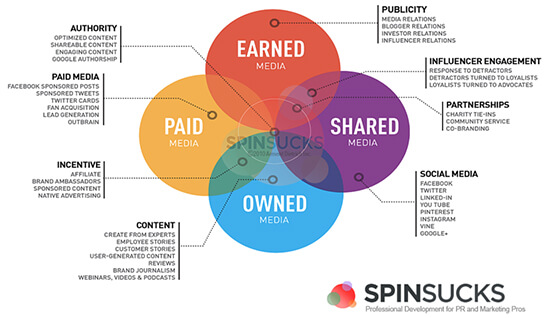 The start-up world is very exciting.
The start-up world is very exciting.
It is also very challenging.
All you have to do is watch a few episodes of HBO’s “Silicon Valley” to see it in action.
Start-up PR is exhilarating, yet frustrating.
You are regularly changing on a dime, which requires you to create a solid story and keep perfecting it to engage and grow your audience.
Start-ups need PR.
That much is true and on which just about every start-up agrees.
The challenge becomes how exactly does a start-up ensure PR success.
Start-ups tend to get into this “instant gratification” mode and think PR just happens.
There’s no work.
PR is this miracle drug that instantly solves their problems so they’re on their way to becoming the next Apple, Google, or Slack.
Since my company, M4 Communications, works with early and mid-stage start-ups to help them implement good marketing and customer experience practices, sometimes the conversation goes like this:
Prospective start-up client: “Get me into TechCrunch.”
Me: “Ok, what do you have?”
Prospective start-up client: “I have a great beta of a product that’s going to disrupt the industry.”
Me: “What else?”
Prospective start-up client: “Like I said, I have this great beta…”
Me: “Great, tell me your story.”
Prospective start-up client: (dead silence)
Start-ups need to understand PR is not a destination; it is a journey.
In fact, it is more accurate to treat PR as a mindset.
I recently gave a presentation entitled “PR for Start-ups” to a roomful of entrepreneurs at UC Irvine.
The audience’s feedback suggested that getting PR is still an obstacle for many start-ups.
To address these concerns, I shared with them five key strategies to ensure start-up PR success.
Craft and Perfect Your Story For PR Success
This is the starting point for all start-ups.
Know who you are, what you do, and why people should care.
What is the unmet need you are solving?
How are you disrupting your industry?
Craft a story around how you came to be, what the problem is and how you are solving it.
Communicate how you are different from your competition and substitutes (yep, substitutes is a form of competition).
You’ll continuously be tweaking your story because this is the story you tell to pitch investors, media, analysts, etc.
As you tweak your story and build content around it, you must focus on the four C’s of communications:
- Be consistent
- Be clear
- Be concise
- Be community-centered
This will ensure you are always “on message” that aligns with the audience and the brand.
The result?
Corporate growth, the golden ticket everyone is after.
Be passionate and empathic.
Journalists love this and what they want to share with their audience.
This leads to the next point…
Think Like an Editor
Understand that a journalist (for traditional or online media), or a blogger, has a job to do and that is to grow and sustain their reading audience, otherwise they are out of business.
Your job is to match your message to the appropriate medium.
So, don’t spam every Tom, Dick, and Mary journalist who could cover you with your news that, for the most part, is irrelevant to his or her readers.
Instead, do your due-diligence and research media outlets and journalists at those sites.
You can do this organically through focusing on media and blogger sites that would be a fit, or you can use a service like Cision, or MuckRack, to find journalists in the aggregate.
Create a manageable list of potential journalists who might be a fit to cover you.
Read journalists’ prior and current posts to understand their voice, what they like and don’t like, and what motivates them.
Also, look at the comments to see how readers are engaging with their content.
Follow journalists and bloggers at their social media accounts to see the content they are sharing, who they follow and how they engage with people.
This will give you the intel you need to be specific, tight, and focused in your pitch and news positioning.
If the journalist has covered your news before, you’ll understand the voice of the journalist and can offer a different or unique take on it that will appeal to their readers.
Always be thinking of how you can add value to the journalist’s job.
Remember, too, to always be prompt when responding to journalists.
And have a user-friendly online press kit that they can easily access.
Double Down On Relationship Building
One mantra that has stayed with me is ABC—“always be connecting.”
Wherever I am, I am always connecting with new people.
Start-ups, unlike an established brand, are creating awareness while trying to promote a product.
This means building relationships becomes very important and is especially key when working with the media.
When you have determined the media you want to work with through your research, pick a manageable number of journalists you want to develop relationships with, say three or four per quarter, and focus on them.
Create a relationship development strategy that includes:
- Listen – listen to what they say, what they like, what they don’t like, their hobbies, their interests, and know their preferred means of contact.
- Engage – share their content on social media, as well as commenting and interacting with them online and at events such as industry conferences.
- Help – if they are working on an article for a particular subject, and you know the subject and can connect them with resources, do so.
- Promote – promote what you are doing, but only when the time is right. Remember, there is a right and wrong time to promote.
You are establishing trust and credibility with the journalist, so they know you can be counted on.
While forging new relationships organically, start-ups can also reach out to journalists looking for sources.
This is another avenue to help start-ups build credibility.
Services such as HARO (Help a Reporter Out), ProfNet (now part of Cision), Media Kitty, PitchRate, and SourceBottle among others help connect journalists with sources they need.
Get Engrained in the PESO Model
I first learned about the PESO model years ago from Gini Dietrich.
As Spin Sucks devotees, you know that the acronym stands for Paid, Earned, Shared, and Owned media.
What I wasn’t prepared for was that my class of entrepreneurs was equally excited about it and totally got what the PESO model instills.
The following diagram lays out what each media type is.

We live in a very content-driven society and PR is no longer only about generating news releases and getting a journalist to report on your news or write about you.
PR goes beyond that—it now includes numerous tactics which all must work together to properly tell your story.
There are a couple of key points to make here.
- We should understand each component of the PESO model, how and when each is used, and how each works with the other three to form the complete PESO model.
- The goal of the PESO model is to ultimately turn your owned media into earned media because third-party credibility still reigns supreme.
To do that, start-ups must understand what their audience wants and communicate authentic stories that resonate with and excite them, and cause them to act.
Don’t Go at PR Alone
One tip entrepreneurs are taught is to not go into a new venture alone, have a co-founder, or a co-founding team.
The same should be said about PR.
To achieve PR success, don’t go at it alone. Have partners.
Consider using your employees and customers for PR help.
Through your employee engagement and customer experience programs, you have created engaged employees and delighted customers.
They are your best brand advocates.
Ask them to help you create content, push through to their networks, and introduce you to journalists and other key influencers.
Remember that as your start-up evolves, so do your PR efforts.
Stay on message and give employees, customers, journalists, and other key influencers a stellar experience and they will want to rave about you.
And that will lead to PR success for your start-up.
image credit: shutterstock